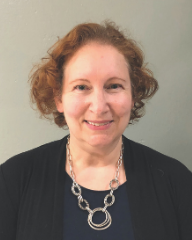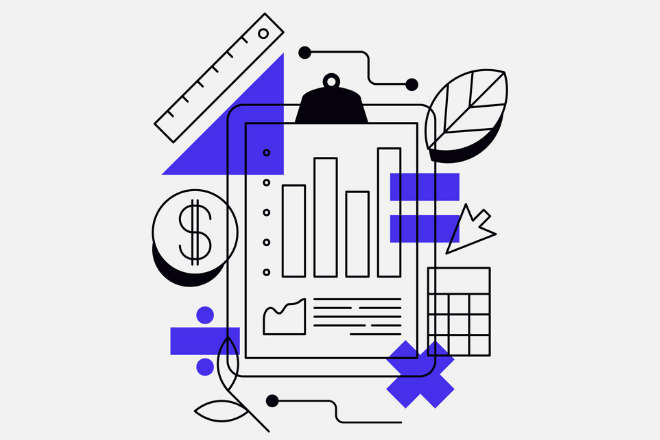Article by Kristin Weigand, St. Stephen’s Episcopal School

St. Stephen’s Episcopal School
When I joined St. Stephen’s Episcopal School in the newly created position of HR director in 2018, I learned that the school completed payroll in-house using an add-on payroll module in our accounting system (Blackbaud) and a separate stand-alone time-keeping system (Paylocity) to record hours worked for non-exempt employees. It wasn’t the perfect system, but it worked. At the same time, the CFO and I had worked with HR information systems (HRIS) in the past, knew the benefits an HRIS could provide to the school, and hoped to implement a new system in the future.
In spring 2019, we learned Blackbaud would phase out its payroll module. This provided an opportunity for us to conduct a request for proposal (RFP) process to find a system that best fit our school’s immediate and long-term needs.
Throughout my career, including a nonprofit organization with 13 charter schools, I have implemented various recruitment, payroll, HR and performance management, and learning management systems. I have learned that no two systems are exactly alike, and I've been able to use those experiences as a foundation for the process we developed at St. Stephen’s. Here are the steps we took for the RFP, evaluation and implementation process at St. Stephen’s and the lessons learned along the way.
The Project Plan
All successfully executed projects start with a plan, and an HRIS RFP is no different. When developing a project plan, we considered the following:
Think both short- and long-term: The HRIS needed to address current data and process needs, but also the ways in which we needed the system to work for us in the next three, five and 10 years.
Include key stakeholders: We asked the administrators, managers and employees who would be using the system to think about how they were accessing and managing employee-related data and processes. We asked them to describe their current pain points and what they hoped an HRIS could do for them.
Determine the must-haves for the new system: It was important for us to get clarity around the non-negotiables for system functionality, which then informed the rest of the process. Our new system had to be best-in-class for time keeping and payroll processing; seamlessly integrate with the accounting general ledger; provide a simple way to get data in and out of the system; and include easy-to-use self-service functionality for employees and managers. We also looked for a system with an applicant tracking system for recruiting, online onboarding and benefits administration, but these functions were identified as nice-to-haves that would not override our focus on the must-haves.
Define what data needs to be in the new system and any system integrations: In considering the 15 years of existing data, we decided we needed to maintain all historical demographic and employment data for all employees in the new system. We also decided that we would not import historical pay and tax data but would instead start fresh in the new system with only current pay and tax data; historical pay data could be accessed from reports we exported from Blackbaud. We also needed to consider the other systems where employee data is stored that would need to share information with our HRIS and those technical integration details.
Now most software systems are more user-friendly and can be managed by HR in the cloud. This allows for HR to ultimately own the management of the project and to partner with IT on the most technical aspects of the system.
Involve IT but be prepared to lead the project: The system implementations in which I participated early in my career were led by the IT department because administration of the software required computer programming expertise and the data was housed on IT’s servers. Now most software systems are more user-friendly and can be managed by HR in the cloud. This allows for HR to ultimately own the management of the project and to partner with IT on the most technical aspects of the system. This also provides HR the opportunity to become the system experts with the knowledge and confidence to administer the system post-implementation.
Set the budget and timeline: We met with the IT, accounting, and finance teams to set a realistic budget for software and implementation fees and a target implementation date looking at fiscal, calendar and academic year considerations. We ultimately targeted a January 1, 2020, payroll implementation so that we would end one calendar year in Blackbaud and start the new year in the new system.

pre-pandemic times
Making the RFP Process Work for You
Use the non-negotiables list to drive the RFP process: We established expectations in advance for the vendors to cover the items on our list during the system demonstrations instead of the standard sales demonstration. We also reviewed the system functionality from the perspective of each stakeholder with each finalist to ensure we knew how each process would work for the administrators, employees and managers.
Get to know the key people on the vendor’s team: We were able to discuss big picture goals and pricing with the salesperson, functionality details with sales engineer, logistics with the implementation manager and post-implementation support with customer service — all key factors in evaluating what system was best for us.
Negotiate everything up front: We reviewed the pricing and service agreements in detail and as an iterative process to ensure that the entire scope of our project was accounted for and included in the pricing. We were also able to secure a multi-year rate guarantee on the software fees as part of the negotiation process, which would have been more difficult to achieve after the contract was signed.
Check references: We asked for a minimum of three references from schools with a similar demographic to St. Stephen’s and that were 6-18 months post-implementation. Again, we used our non-negotiables list to compare what we had been told during the sales process with how the system actually worked from the customers’ perspectives as well as how satisfied they were with the implementation process and post-implementation customer support.
Implementation
Consider a phased implementation: We were intentional in our thinking and planning about how the new system would impact our stakeholders. We created the following phased implementation plan to maximum training opportunities and user adoption.
First we implemented payroll and the general ledger integration with accounting. After two successful payroll cycles, we rolled out time and attendance, including biometric (fingerprint) time clocks for hourly employees and timesheets for salary non-exempt employees. At that time, we also trained our managers on their self-service portal so they could review and approve timecards and time-off requests.
Next, we rolled out the employee self-service portal so that employees could review and update their contact information, tax withholding, direct deposit information and view online pay statements.
Finally, we implemented the applicant tracking system in January and online onboarding in April to align with our hiring season, and benefits administration in the summer to prepare for annual open enrollment in October.
The phased implementation allowed our stakeholders to learn the system in manageable segments and gave HR the bandwidth to provide robust training and support to our employees.
The phased implementation allowed our stakeholders to learn the system in manageable segments and gave HR the bandwidth to provide robust training and support to our employees.
Get clarity on deliverables: At the beginning of implementation, we asked for a list of deliverables and deadlines for which we were responsible during implementation so we could plan backwards.
Draft communication and training plans: We worked with our marketing and IT teams to create communication and training plans for managers and employees tied to our phased implementation plan.
Complete a test run: In addition to validating the data in the new system prior to the first payroll, we ran a parallel payroll for the last payroll in Blackbaud so we could compare data and correct inconsistencies. It required twice the work for one payroll but paved the way for an error-free first payroll in the new system.
Post-Implementation
Prepare for everything to be new: While this was a big change for our employees and managers, it was an even bigger change for HR. We needed to remember to be patient with ourselves and to use mistakes as learning opportunities.
Leverage early adopters and change champions: We identified the employees and managers who were excited about the new system, gave them advance previews and asked for their feedback. They in turn shared their enthusiasm about the new system and built positive momentum with the other employees.
Train, train, train: We trained employees and managers collectively but also made ourselves available to individuals who needed extra training and support so that everyone felt successful during the transition.
Demonstrate return on investment: We have leveraged the new system to provide data solutions and process improvements for managers and other departments whenever possible.
Download a PDF of this article.
To share a strategy that makes your business office more effective or efficient, email netassets@nboa.org. In the subject line, type STRATEGIES.
Kristin Weigand is director of human resources at St. Stephen’s Episcopal School, a grades 6–12 day and boarding school with 694 students in Austin, Texas.



